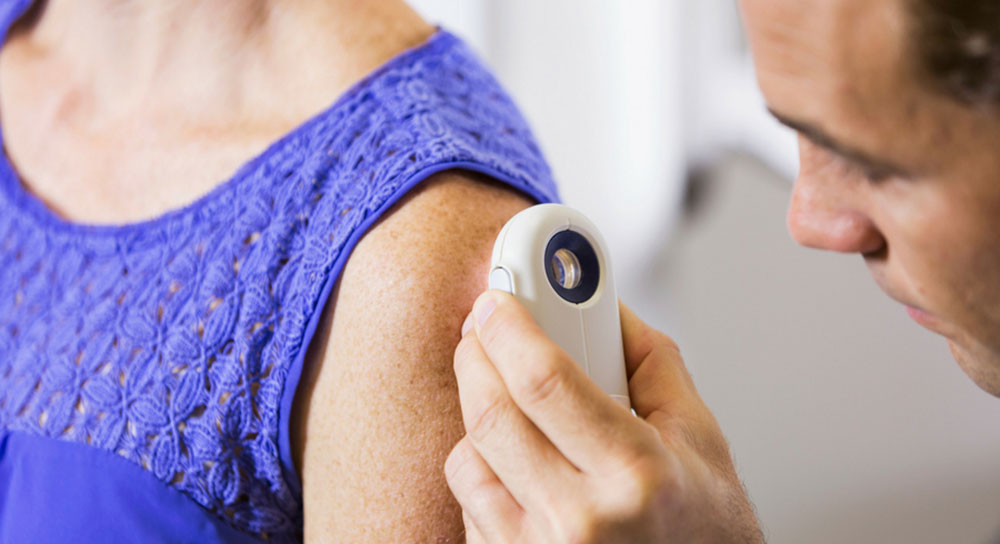It’s up to all of us to stay vigilant in checking our moles. In fact, doctors recommend conducting a head-to-toe examination for suspicious moles every month.
But what exactly are you looking for?
It’s as easy as A…B…C…D…E.
The signs of Melanoma
Asymmetry – Is your mole irregular in shape? Benign moles are usually symmetrical.
Border irregularity – Are the borders of your mole difficult to define?
Color variations – Do you have more than one color or an uneven distribution of color in the mole?
Diameter – Is your mole more than ¼ inch (6 mm) wide?
x
Evolution – Has your mole changed recently in size or any of the areas above?
If any of the ABCDE rules apply to a mole on your body, bring it to the attention of your physician or dermatologist immediately.
Other skin cancer types to watch out for
While these rules apply mainly to the most common form of melanoma, there are other types of skin cancer that look a little different. While searching your body, also watch for:
- Any mole or lesion that stands out from the rest. It may be larger or darker than surrounding moles, smaller and redder, or the sole mole on an area of your body.
- Any red bumps — present for at least one month — that look like a pimple, but are much firmer to the touch.
- Any darkly pigmented lesion containing some dark blue or black color that doesn’t resemble the surrounding lesions.
Learn more: Watch this MedWatch Today segment for more tips to recognize and prevent melanoma:






